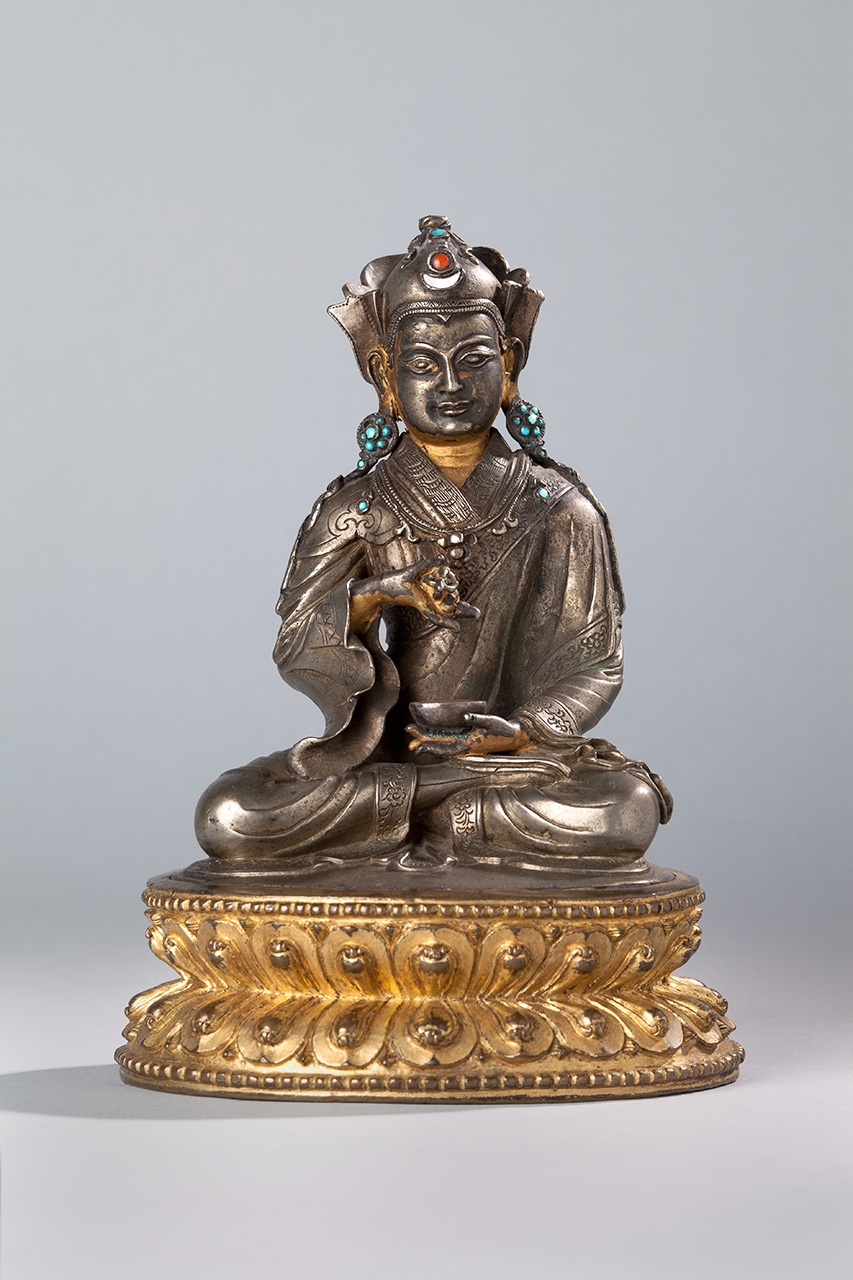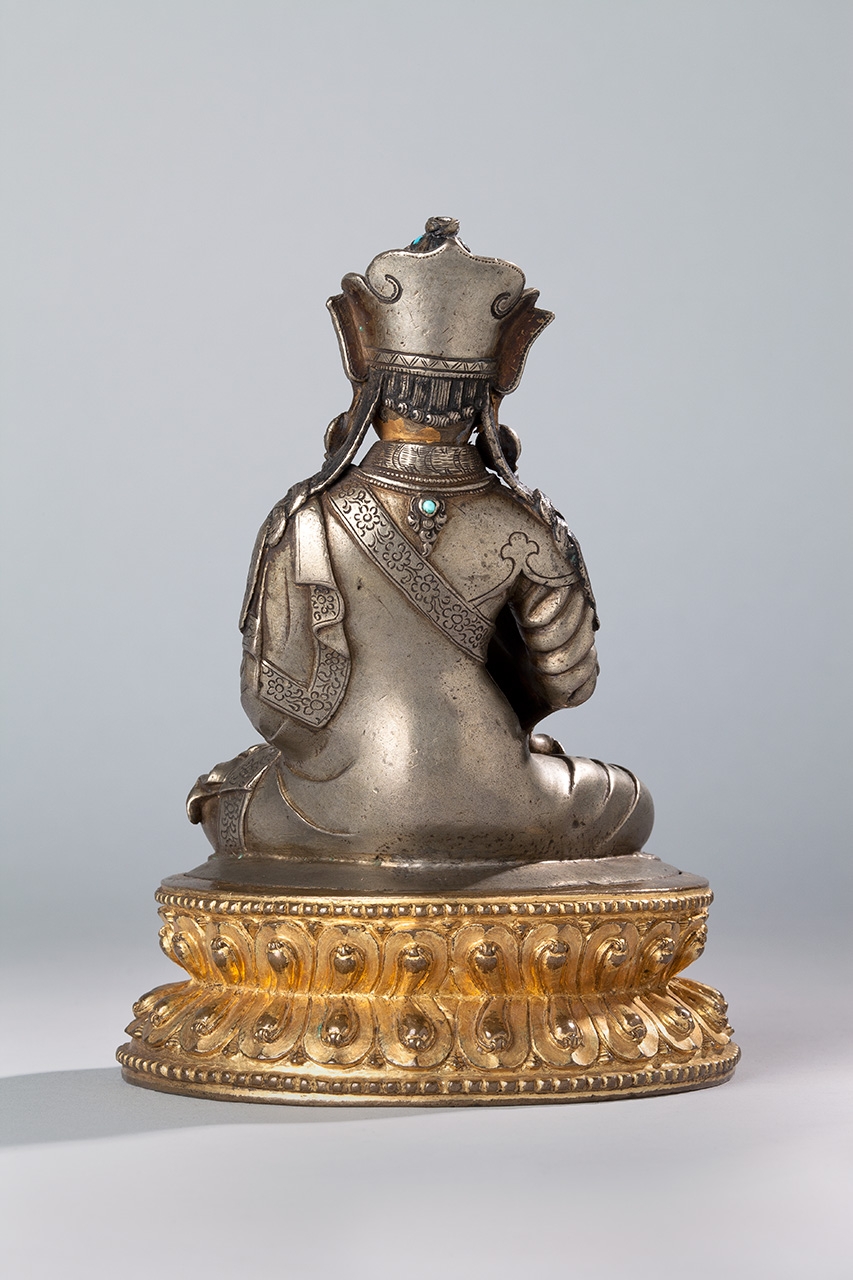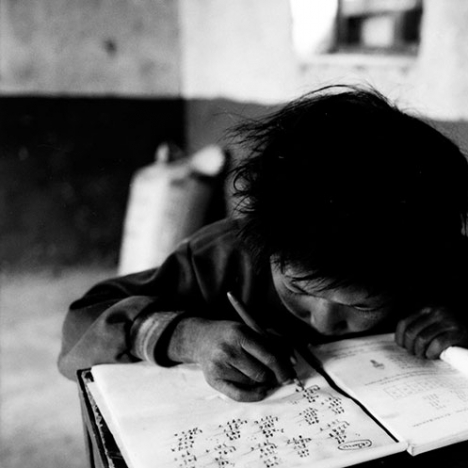
Padmasambhava, “lotus-born,” an Indian teacher said to have been miraculously born in a lotus flower, is revered by all Tibetan Buddhist traditions. He is considered one of the founding teachers of Buddhism in Tibet, along with the scholar Shantarakshita; the Tibetan emperor Tri Songdetsen invited them both to his kingdom. Padmasambhava is credited with taming the forces opposed to Buddhism in Tibet, such as indigenous gods, which he transformed into Buddhist protectors. It is also said that Padmasambhava concealed his teachings, known as treasure teachings, throughout the Himalayan landscape to be discovered by foretold disciples at opportune times in the future.
Revered by Tibetans as the Second Buddha, Padmasambhava can be recognized by his lotus hat and elaborate dress, which combines secular, Tantric, and monastic elements (boots, long sleeves, and outer robe).
This marvelous silver sculpture is rich in detail. From the felt collar of the innermost vest to the pointed cape visible only on the right shoulder to the wide flaring sleeves, each element has been finely and thoughtfully executed. Other particularly refined details include the necklace on top of the clothing and the knot-shaped braids on the shoulders. A light sway in the body adds a sense of immediacy to the image, and the inlays, paint, and golden base enliven it. As such this is an example of Tibetan metal craftsmanship at its best.
H 6 1/2 x W 4 3/4 x D 3 3/4 in.
C2005.16.36, HAR65459
- https://dev.rubinmuseum.org/images/content/751/c2005.16.36__zoom.jpg
- https://dev.rubinmuseum.org/images/content/751/c2005.16.36_back__zoom.jpg
- https://dev.rubinmuseum.org/images/content/751/c2005.16.36__zoom.jpg
- https://dev.rubinmuseum.org/images/content/751/c2005.16.36_back__zoom.jpg



